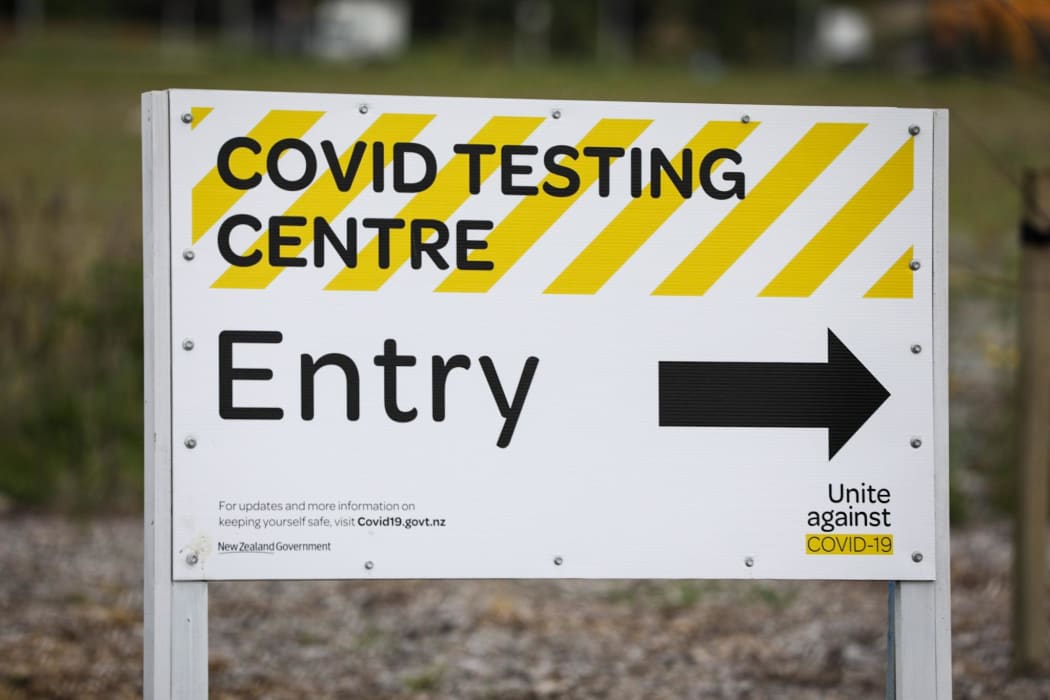Analysis: Anti-vaxxers have been in the news a lot recently, and all the coverage is putting the media in danger of becoming a vector for misleading or false messages.

Photo: RNZ / Nate McKinnon
A wave of coverage followed the protesters in the so-called Hikoi of Truth as they drove north to Waitangi yesterday.
When the convoy was stopped at the Auckland border, the media covered the traffic jams. As they progressed north, reporters called police to ask how disappointed they were with the event.
By the end of the day, most of the stories were centered around Tai Tokerau Border Control founder Hone Harawira's allegation that the hikoi was a scam run by Pākehā anti-vaxxers. The Spinoff’s Dylan Reeve added evidence to that assessment after infiltrating the group’s Facebook page and finding participants spreading a bewildering array of conspiracy theories.
Even if they were running a ruse, the hikoi’s organisers managed to win valuable coverage for their cause.
They were far from the only anti-vax, or vaccine hesitant group to hit the headlines recently.
In the past few weeks, RNZ and Stuff have carried a story on Auckland midwives campaigning against mandatory vaccinations for their peers, Newshub has covered 10 Taranaki midwives who say they may quit over the mandate, the Herald has written up a strange missive from former TV presenter Liz Gunn, who blamed the vaccination order for an earthquake in the North Island, and multiple outlets covered an unvaccinated GP who decided to quit her job over the vaccine mandate.
The reasons for these stories are clear. The unvaccinated are currently at the centre of our response to the Covid-19 pandemic.
Our ability to return to some semblance of normality is directly tied to their willingness to go down to the local pharmacy to get a jab, and the government is introducing a series of increasingly stringent measures to compel them to literally take their medicine. The stories are popular, with strong opinions on both sides.
But the coverage of anti-vaxxers has the potential to popularise their misleading messages.
That danger stems partly from how these stories distort reality.
The handful of GPs refusing the Pfizer vaccine are currently winning at least as much coverage as the 6625 who have signed an open letter recommending it to all eligible New Zealanders.
The midwives opposing the vaccine mandate have received far more coverage than the hundreds in support.
Thanks to our innate inability to properly weight these numbers, that can make vaccine hesitancy seem far more widespread than it is among health professionals, who most people view with a high degree of trust.
Even the most sceptical stories on anti-vaxxers can help reinforce misinformation.
During Donald Trump’s rise to US President, the media obsessively covered his every pronouncement, no matter how controversial or inaccurate.
Much of that coverage was negative, or heavily fact-checked. But the media found that even if they condemned a lie, giving it attention helped it spread.
The solution, arrived at too late or not at all by many outlets, was to not platform the lies in the first place.
A similar argument could apply to stories about the groups protesting vaccinations. Their ideas have been discredited by just about every professional with any expertise.
Platforming them anyway gives them oxygen. If media companies are serious about goals like vaccinating 90% of our eligible population, it could help to excise these stories from their pages.
Sometimes though, the actions of the vaccine hesitant are genuinely newsworthy.
Those 10 Taranaki midwives threatening to quit over the vaccine mandate represent nearly 20% of the region’s workforce, and losing them could have an impact on people’s health outcomes.
Covering a story like that one well could mean restructuring it to ensure there’s less potential to mislead the audience.
In the US, linguistics professor George Lakoff advocated for a truth sandwich - stating the truth first, then a lie, then the truth again.
Some New Zealand journalists have employed a similar strategy.
In a story this week on vaccine hesitancy, 1News reporter Katie Bradford placed a quote from Liz Gunn in between on-camera monologues about disinformation and the growing infodemic.
Stuff’s Tony Wall regularly interrupted his feature on vaccine hesitant Thames mayor Sandra Goudie to fact-check her and her husband’s false claims.
This style of coverage is likely uncomfortable for some New Zealand reporters, who seldom have to deal with the kind of hyper-partisan, truth-averse sources common in US politics.
Making truth claims within a story may appear to breach a journalistic standard: objectivity.
But that standard is ripe for abuse by bad faith actors, and has been used in the past to pressure newsrooms into repeating lies or platforming climate denial. Failing to correct fact-free arguments can mean credible news organisations become unwitting vectors for misinformation.
In these circumstances, so-called neutral reporting can actually work counter to another, much more fundamental journalistic value: telling your audience the truth.


